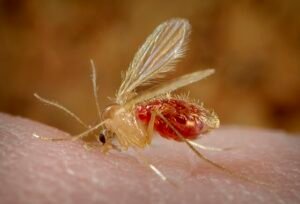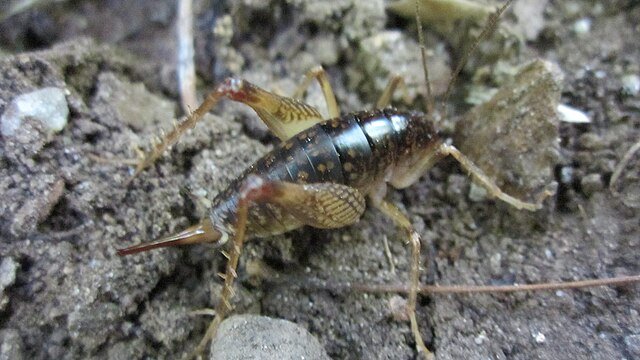Sand Flies (Phlebotomus spp., Lutzomyia spp.): Identification, Bites, and Control for Homes and Businesses

If you’ve ever been bitten at night by tiny insects that left an itchy red bump, chances are it wasn’t mosquitoes—it might have been sand flies (Phlebotomus spp. or Lutzomyia spp.). These small, hairy flies are common in tropical and subtropical regions but are also spreading into new areas due to warmer climates and global travel.
As a pest control professional and agronomist, I’ve dealt with hundreds of cases of sand flies around coastal resorts, farms, and suburban gardens. They are not only a nuisance but also a potential public health risk, as some species transmit Leishmaniasis, a serious parasitic disease.
In this guide, I’ll break down everything you need to know about these elusive insects—how to identify them, what dangers they pose, and most importantly, how to keep them away from your property.
Identification of Sand Flies
Sand flies are often confused with mosquitoes or gnats, but they belong to a completely different family—Psychodidae.
Key identification features:
Size: Very small, only 1.5–3.5 mm long.
Color: Light brown, tan, or golden.
Body: Covered in fine hairs that make them look “dusty.”
Wings: V-shaped when resting, held at a 45° angle like a small moth.
Flight: Weak and hopping, unlike the smooth flight of mosquitoes.
Activity: Mostly active at dawn, dusk, and nighttime.
If you look closely with a magnifier or under light, you’ll notice their wings are hairy—a key feature that distinguishes them from other biting flies like black flies (Simulium spp.) or stable flies (Stomoxys calcitrans).
Biology and Ecology
Sand flies have a four-stage life cycle: egg, larva, pupa, and adult.
Eggs are laid in cracks, leaf litter, or moist organic matter—not directly in water like mosquitoes.
Larvae feed on decaying vegetation, animal waste, or fungi.
Pupae develop in the same environment and emerge as adults after 1–2 weeks.
Adults live for about 1–3 weeks, depending on temperature and humidity.
Only female sand flies bite because they need blood to produce eggs. Males feed on plant nectar and honeydew.
Their activity peaks during warm, humid months, especially in areas with poor drainage, organic debris, and dense vegetation.
Global Distribution
Sand flies have a wide global range, mainly concentrated in warmer regions:
Europe: Southern Europe (Greece, Italy, Spain, Portugal, Cyprus). Recent expansion into Central Europe.
Middle East & Africa: High prevalence, especially as vectors of Leishmania parasites.
Asia: Found throughout India, Pakistan, Thailand, and the Philippines.
Americas: The Lutzomyia genus dominates in Central and South America.
Australia: Fewer cases, but present in tropical northern regions.
Climate change is helping them move northward, meaning countries that previously had only occasional encounters are now reporting stable populations of sand flies.
Risks and Damage
1. Painful and itchy bites
Sand fly bites are smaller than mosquito bites but cause intense itching and red papules that can last for several days. Some people develop allergic reactions leading to swelling or blisters.
2. Disease transmission
Certain species are dangerous because they transmit Leishmaniasis, a parasitic disease caused by Leishmania donovani and related species.
Main types of Leishmaniasis:
Cutaneous leishmaniasis: Skin sores and ulcers.
Visceral leishmaniasis (Kala-azar): Affects internal organs such as the spleen and liver; can be fatal if untreated.
Mucocutaneous leishmaniasis: Damages mucous membranes in the nose and mouth.
These diseases affect both humans and animals, especially dogs, which serve as major reservoirs in many countries.
3. Veterinary impact
In regions like Southern Europe and Latin America, canine leishmaniasis is a major problem. Dogs infected by sand flies can transmit the parasite to other sand flies, keeping the cycle alive.
4. Economic and social effects
Tourist destinations, hotels, and farms suffer from complaints and reduced outdoor activity. Bites are uncomfortable and can damage the reputation of hospitality businesses if not managed properly.
Signs of Infestation
Because sand flies are nocturnal and tiny, they are hard to spot. However, you may notice:
Small clusters of bites on exposed skin (legs, arms, face).
Tiny golden or gray flies hovering near lights at night.
Buzzing or hopping movement near damp soil or compost piles.
Increased dog scratching or skin lesions in endemic areas.
In severe infestations, small resting flies may be seen on walls, curtains, or near animal pens.
If you see tiny flies that look like flying dust particles, especially at dusk, it’s time to inspect your surroundings.
Control Methods
Sand flies are difficult to control completely, but integrated methods can drastically reduce their presence.
1. Environmental management
Eliminate organic waste: Remove leaf litter, compost piles, and animal droppings.
Improve drainage: Fix leaking taps, pipes, and stagnant water zones.
Use fine mesh screens: Prevent entry through windows and doors.
Keep vegetation trimmed: Reduces breeding and resting sites.
2. Personal protection
Apply repellents: DEET (20–30%), picaridin, or oil of lemon eucalyptus works well.
Wear long sleeves and pants in risk areas, especially at dawn and dusk.
Use fans or mosquito nets indoors; sand flies are weak fliers.
3. Indoor control
Residual insecticide sprays on walls and shaded areas where flies rest.
Pyrethroid-based aerosols can provide temporary relief indoors.
Electric light traps help monitor and reduce indoor populations.
4. Veterinary protection
For dogs in endemic regions:
Use collars impregnated with deltamethrin or flumethrin.
Apply spot-on treatments approved for sand fly protection.
Keep animals indoors during peak sand fly activity times.
Advanced Approaches
Professionally, I recommend Integrated Pest Management (IPM) combining prevention, monitoring, and control:
Monitoring traps with CO₂ or light attraction.
Larval habitat modification—drying and cleaning organic-rich soil around homes and animal shelters.
Biological control: Using Bacillus thuringiensis israelensis (BTI) in breeding zones.
Insecticide-treated netting for outdoor seating or animal housing.
Some experimental research also focuses on vaccines for dogs against Leishmania and biological repellents derived from essential oils such as geraniol, citronella, or neem.
Cultural and Historical Context
Sand flies have affected human populations for thousands of years. In ancient writings from the Middle East and Mediterranean, references to “night gnats” describe exactly what we know as sand flies today.
In rural areas, people used to burn herbs or animal dung to repel them at dusk. Even now, traditional practices survive—locals in some parts of India still use smoke fires and clay pots with smoldering material to keep sand flies away.
Historically, outbreaks of Leishmaniasis shaped entire communities, forcing migration from infected zones. Modern science has reduced the danger, but the insect’s impact remains deeply cultural in many tropical regions.
Frequently Asked Questions (FAQ)
1. Do sand flies bite humans?
Yes. Female sand flies feed on human and animal blood to develop eggs.
2. What do sand fly bites look like?
Small, red, itchy bumps—often more painful and lasting longer than mosquito bites.
3. Can sand flies transmit diseases?
Yes. They are the primary vector for Leishmaniasis in humans and dogs.
4. Are sand flies found indoors?
Usually not, but they can enter through open windows or cracks near damp soil.
5. What attracts sand flies?
They are drawn to carbon dioxide, body heat, moisture, and organic debris.
6. How can I protect my pets from sand flies?
Use repellent collars, keep animals indoors during dusk, and treat kennels with residual insecticides.
7. Do sand flies live in sand?
Despite their name, not necessarily. They prefer moist, shaded soil with organic matter rather than dry sand.
8. What’s the difference between sand flies and fruit flies?
Sand flies bite and are nocturnal; fruit flies (Drosophila spp.) feed on fermenting fruit and do not bite.
Final Thoughts
Sand flies (Phlebotomus spp., Lutzomyia spp.) are small but serious pests. Unlike mosquitoes or gnats, they cause painful, itchy bites and can spread dangerous diseases like Leishmaniasis. Even though total elimination is nearly impossible, smart prevention can make a big difference.
From my experience, controlling sand flies starts with environmental cleaning—remove organic debris, fix moisture problems, and keep areas around buildings dry. Use repellents, screens, and treated nets to protect people and animals, especially at night.
For dog owners in endemic areas, repellent collars and spot-on treatments are essential. Don’t underestimate how quickly one infected dog can become a reservoir for parasites.
If you live near the coast, rivers, or farmland, take preventive steps before the warm season begins. Once sand flies are established, it takes more effort to push them back. I’ve treated hundreds of properties where early action saved both time and money.
Good prevention is always cheaper—and safer—than crisis response.
Disclaimer
This article is for informational purposes only. Pest control laws and approved chemicals vary by country. For best results and legal safety, we strongly recommend contacting a licensed pest control professional in your local area. Always make sure that the pest control technician is properly certified or licensed, depending on your country’s regulations. It’s important to confirm that they only use approved products and apply them exactly as instructed on the product label. In most places in Europe, UK, or USA, following label directions is not just best practice—it’s the law.
Author
Nasos Iliopoulos
BSc Agronomist & Certified Pest Control Expert
Scientific Director – Advance Services (Athens, Greece)
Licensed Pest Control Business – Ministry of Rural Development & Food (GR)
References
Britannica - Sand flies
Centers for Disease Control and Prevention (CDC). (2022). Preventing sand fly bites and leishmaniasis.

